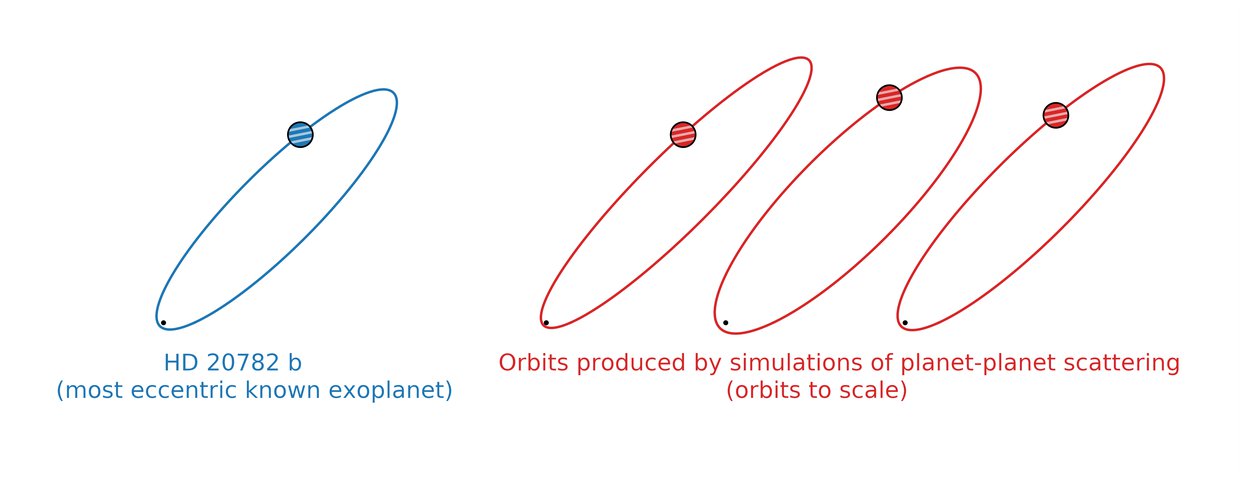
Oct. 14, 2019
Research Highlight
Examining the Eccentricity of Giants

Scale drawing of the orbit of planet HD 20782 b (blue) as compared to three simulation results (red). Simulations of planet-planet scattering can produce orbits similar to HD 20782 b, the most extremely eccentric planet we’ve discovered thus far. Star positions are marked in black.Image credit: Daniel Carrera.
Scientists supported in part by the NASA Astrobiology Program have examined how giant exoplanets end up in their final orbits around distant stars. Astronomers continue to discover more and more planets beyond our solar system, and as the number grows so does our knowledge of the diversity of planets that can exist in the Universe. Many distant solar system are vastly different than our own, and support planets that unlike anything we see in orbit around our own star, the Sun. This includes rocky ‘super-Earths’ that are larger than our own planet, or ‘Hot Jupiters,’ gas giants that orbit close to their host star.
One big difference between the Solar System and other systems in the Universe is that many giant exoplanets have been found to have highly eccentric (non-circular) orbits around their stars, especially when compared to planets in the Solar System like Jupiter and Saturn. One theory of why this is the case is known as planet-planet scattering. The basic idea is that gravitational interactions between planets that form close together act to ‘scatter’ each other, pushing them into highly eccentric orbits.
Previous studies have shown that planet-planet scattering can broadly explain many of the eccentric orbits we see, but the mechanism hadn’t been examined for the most extreme cases of highly eccentric orbits. To address this, scientists ran a large number of computer simulations to understand the interactions between closely packed, giant exoplanets to see how they perturbed each other orbits. The results indicate that scattering alone could indeed account for the highly eccentric orbits. Additionally, such extreme orbits might not be rare in the Universe.
The study, “Planet–planet scattering as the source of the highest eccentricity exoplanets,” was published in Astronomy & Astrophysics. The work was supported by the Nexus for Exoplanet System Science (NExSS), the NASA Astrobiology Postdoctoral Program (NPP), and the NASA Astrobiology Institute (NAI). NExSS is a NASA research coordination network supported in part by the NASA Astrobiology Program. This program element is shared between NASA’s Planetary Science Division (PSD) and the Astrophysics Division. This research is a critical part of NASA’s work to understand the Universe, advance human exploration, and inspire the next generation. As NASA’s Artemis program moves forward with human exploration of the Moon, the search for life on other worlds remains a top priority for the agency.